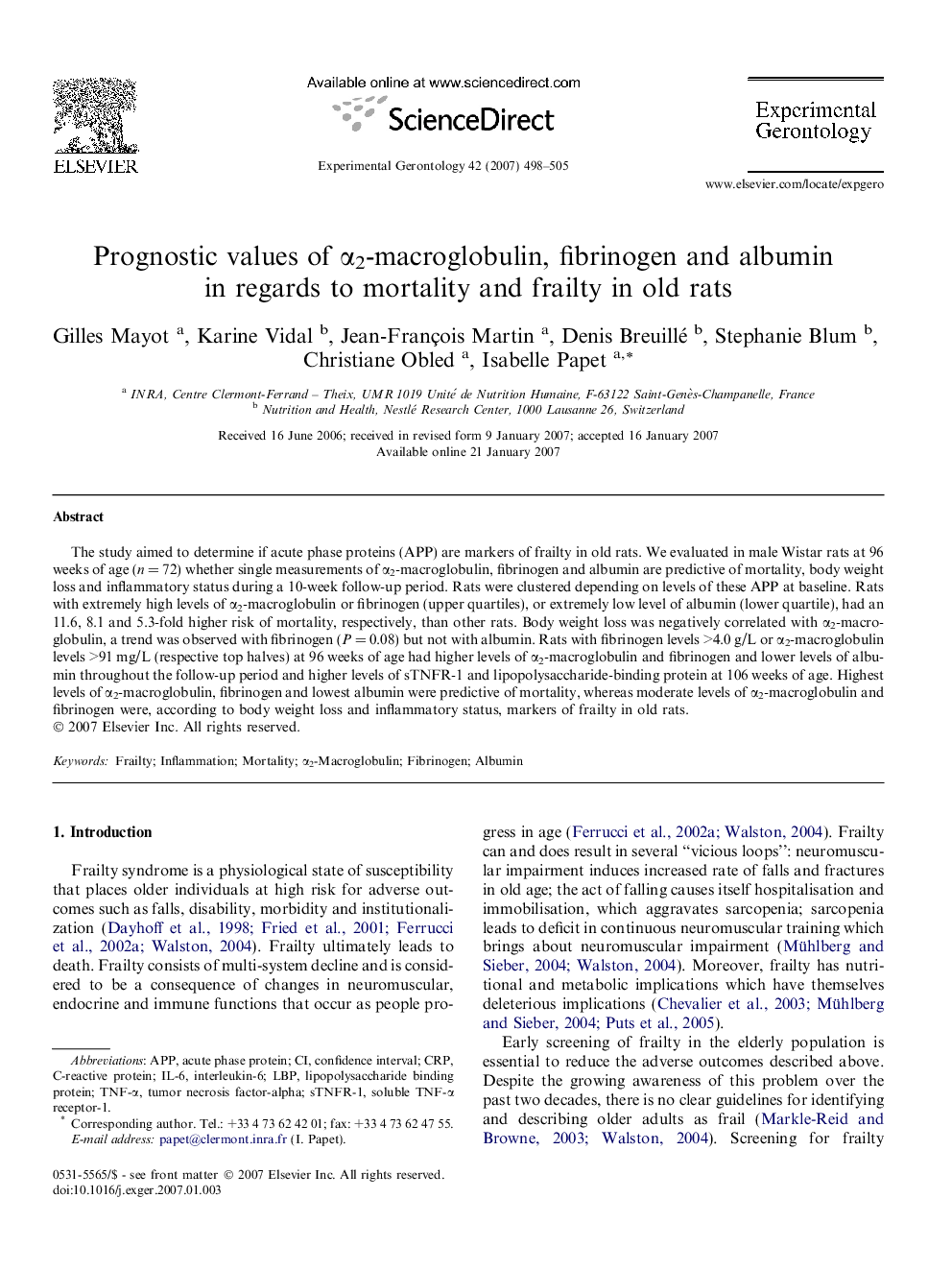| Article ID | Journal | Published Year | Pages | File Type |
|---|---|---|---|---|
| 1907569 | Experimental Gerontology | 2007 | 8 Pages |
The study aimed to determine if acute phase proteins (APP) are markers of frailty in old rats. We evaluated in male Wistar rats at 96 weeks of age (n = 72) whether single measurements of α2-macroglobulin, fibrinogen and albumin are predictive of mortality, body weight loss and inflammatory status during a 10-week follow-up period. Rats were clustered depending on levels of these APP at baseline. Rats with extremely high levels of α2-macroglobulin or fibrinogen (upper quartiles), or extremely low level of albumin (lower quartile), had an 11.6, 8.1 and 5.3-fold higher risk of mortality, respectively, than other rats. Body weight loss was negatively correlated with α2-macroglobulin, a trend was observed with fibrinogen (P = 0.08) but not with albumin. Rats with fibrinogen levels >4.0 g/L or α2-macroglobulin levels >91 mg/L (respective top halves) at 96 weeks of age had higher levels of α2-macroglobulin and fibrinogen and lower levels of albumin throughout the follow-up period and higher levels of sTNFR-1 and lipopolysaccharide-binding protein at 106 weeks of age. Highest levels of α2-macroglobulin, fibrinogen and lowest albumin were predictive of mortality, whereas moderate levels of α2-macroglobulin and fibrinogen were, according to body weight loss and inflammatory status, markers of frailty in old rats.
